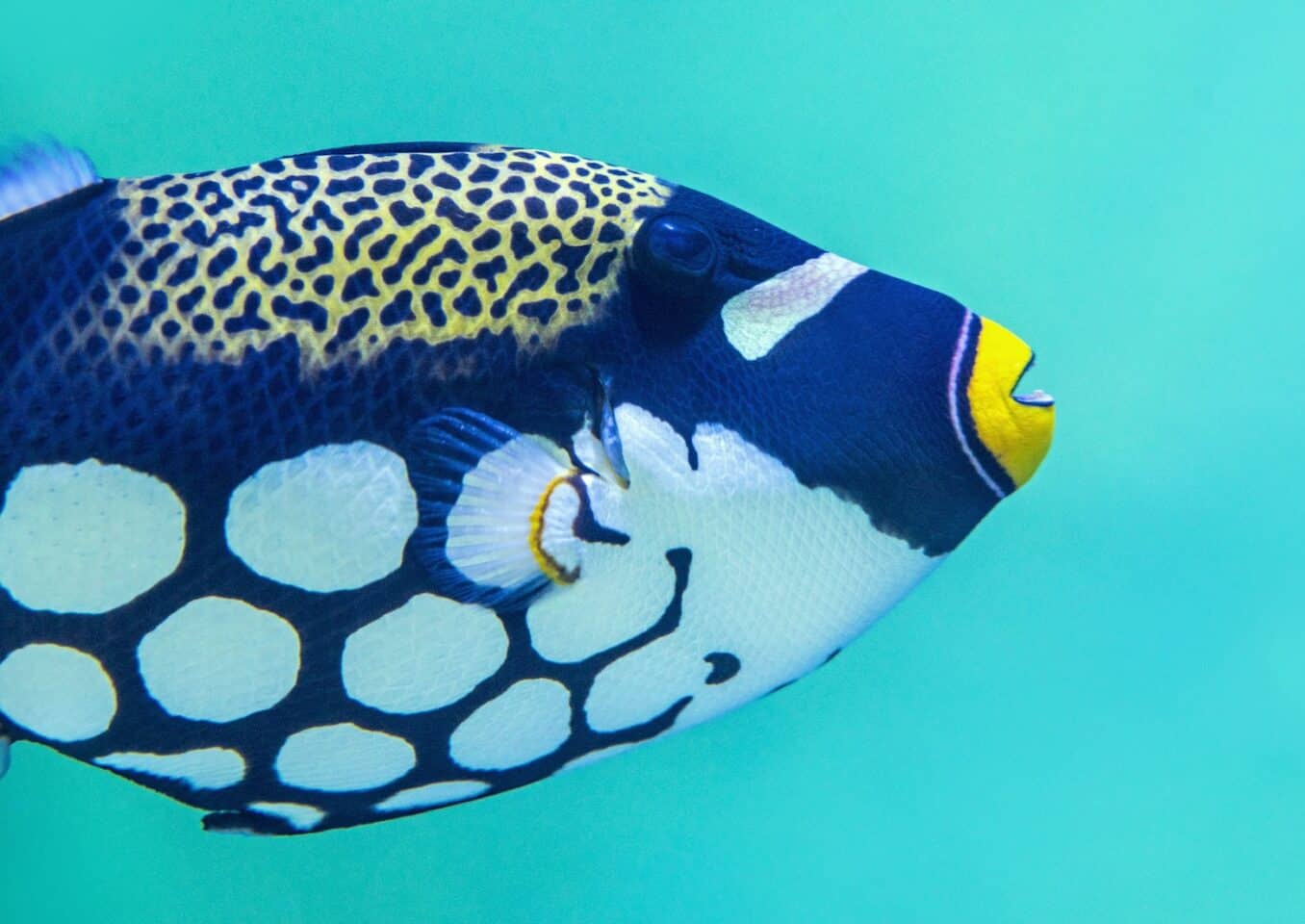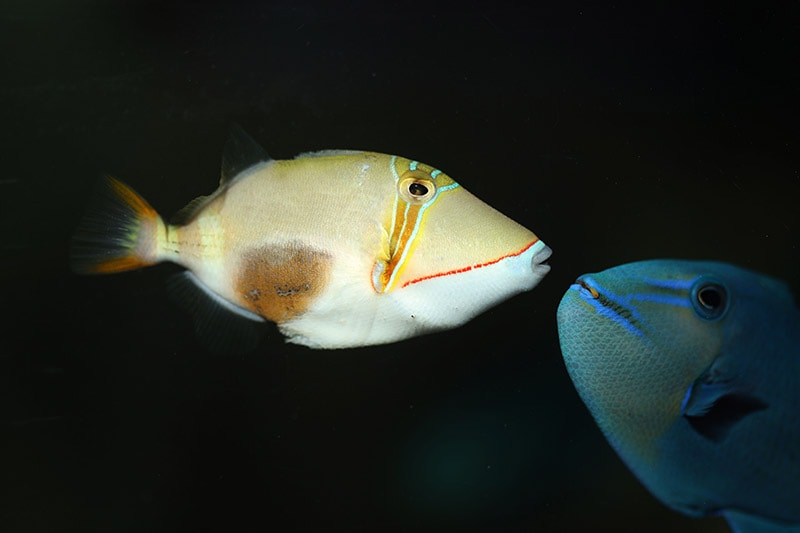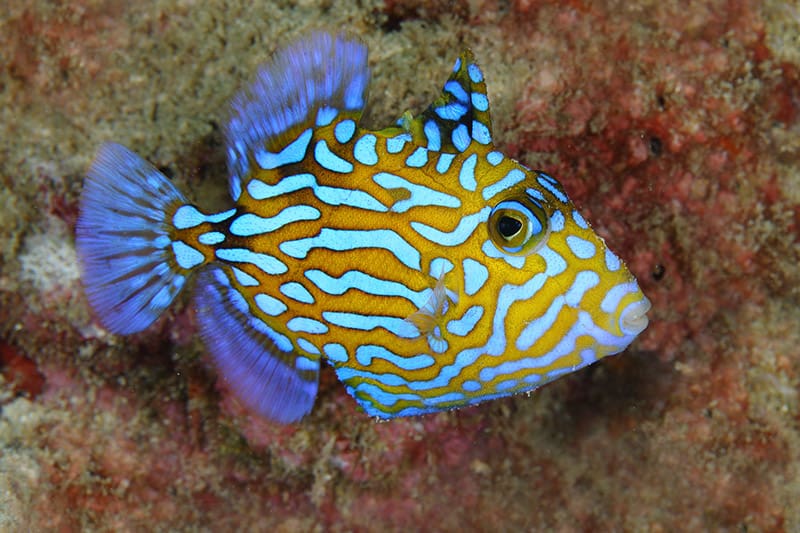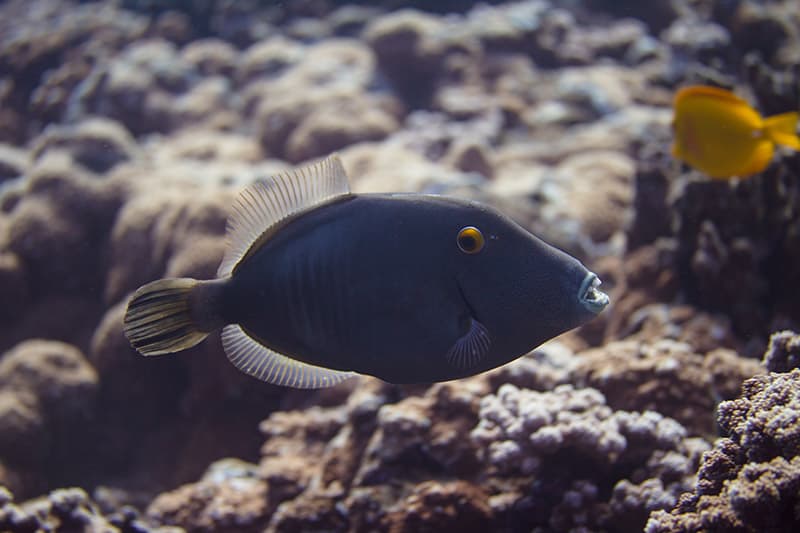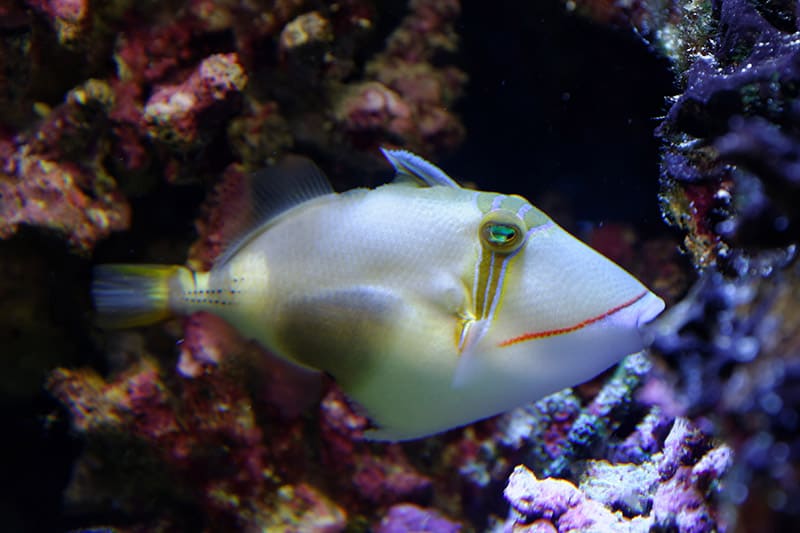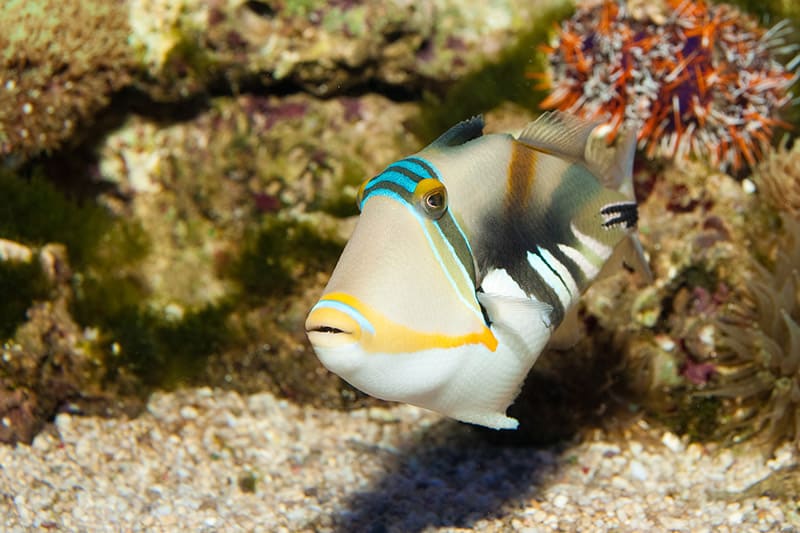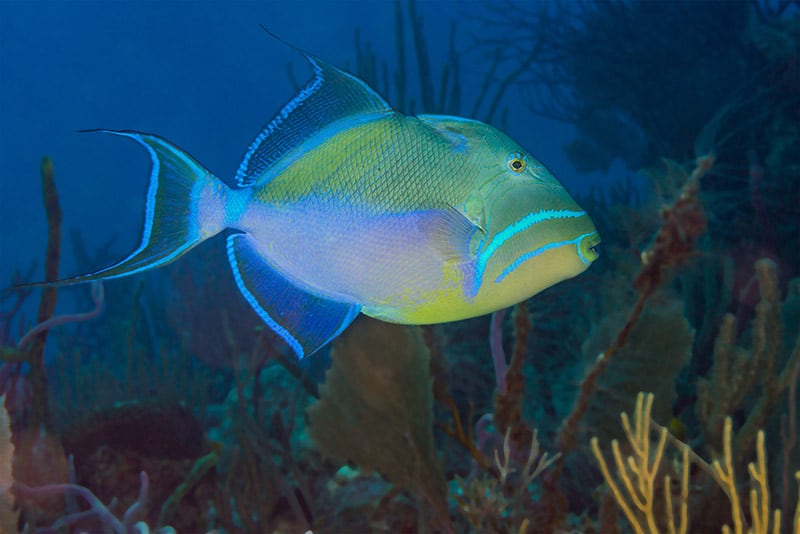The clown triggerfish lives alone in their natural habitat. They are very intolerant of similar species. This is why you usually see very few Triggerfish kept together in the same aquarium.
Members of this family have acquired their common name ‘triggerfish’ from the characteristic locking and unlocking of their first dorsal fin. Normally the dorsal fin is positioned in a flat groove on the top of the body. It can however, be locked in the upright position in order to wedge the fish into some crevice in which it has taken refuge. This keeps the triggerfish from being removed from the crevice and eaten.
- For more information on keeping marine fish see: Guide to a Happy, Healthy Marine Aquarium
Description
Triggerfish are relatively poor swimmers, most of the time they move with undulating wave motions of the dorsal and anal fins, only using the tail fin for emergencies!
Triggerfish have teeth that are very stong and often stick out, which is ideal for eating shelled invertebrates and sea urchins. Don’t put a Triggerfish in an aquarium with invertebrates! When eating a Crown of Thorns starfish, the trigger will first blow it over onto it’s back in order to get at the soft unprotected underbelly.
Care and feeding
In captivity these fish will eat almost everything that is offered and should be fed everything like live foods (brine shrimp), frozen foods, flakes, squid, shrimp (regular or river), and even chopped earthworms.
Breeding
See Marine Fish Breeding for information the on reproductive habits of triggerfish.
Featured Image Credit: David Clode, Unsplash
